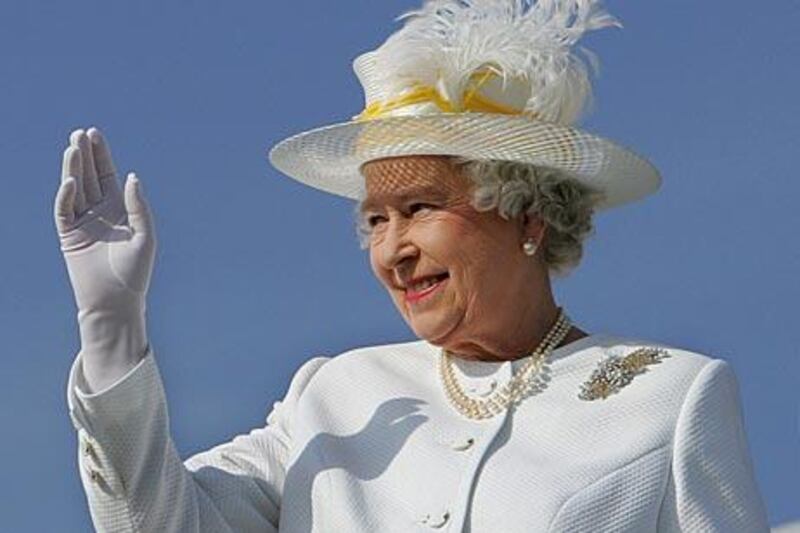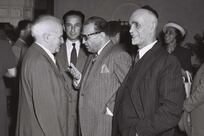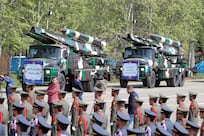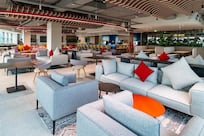She's inspired designers from Dolce & Gabbana to Luella Bartley and style icons from Madonna to Agyness Deyn. Her wardrobe has held items as varied as Roger Vivier wedding shoes and a ceremonial Maori feather cloak. She is said to have worn 5,000 different hats during her reign and she has a team of dressers, designers and milliners on hand ready to whip up a quick evening frock when required.
For all the limitations that the Queen of England's role puts on her wardrobe - the constant scrutiny, the criticism, the need to be culturally appropriate on trips around the world while still being able, at the age of 84, to walk through crowds of onlookers in all weathers at hundreds of public occasions each year - she has somehow managed to carve out an absolutely identifiable style.
It hasn't been without trials: the young Elizabeth started her public life during the Second World War, in the last year of which the 16-year-old princess played her part in the Women's Auxiliary Territorial Service, training as a mechanic and driving a military truck. With the population living on rations and dressmaking fabric almost impossible to find, Elizabeth and her sister Margaret were already learning the importance of clothes in sending a message of solidarity to the public - as well as absorbing a lesson of austerity. (Her recent much-publicised recycling of dresses and fabrics, at a time when the economy dictates that displays of excessive wealth are tasteless, shows that it's a lesson she has never forgotten.) The pictures of the heir presumptive from the mid-1940s are all simple floral cotton dresses, boxy tweed suits and khakis, cut using minimal fabric.
Even when she married in 1947, the year that Dior created the extravagant and revolutionary New Look, with its full skirts made of 20 yards of fabric, the princess had to use ration coupons to get hold of the silk for her Norman Hartnell-designed wedding dress, looking to America to provide the seed pearls with which it was embroidered.
It was not until her tours of the Commonwealth in the early 1950s, before and after her coronation, that she began to adopt the classic full-skirted shapes that defined the decade, wearing a ravishing selection of Norman Hartnell outfits (he also designed the exquisite coronation dress). And while the young queen's exquisite dresses evoked a certain glamour, it was her dashing sister Margaret who was able to truly indulge in fashion. For Elizabeth, the watchword was, and remains, dignity.
We look at Queen Elizabeth II's style over the past six decades.
1. 1950s
From 1953, the young Queen Elizabeth was travelling the Commonwealth, charming its leaders with her poise and elegance. The style of the 1950s was perfectly suited to the beautiful young royal: decorous, discreet yet fabulously glamorous in the Grace Kelly vein. Her dressmakers Norman Hartnell and Hardy Amies put her in fitted bodices and full skirts, accessorised with pretty hats, structured bags and block-heeled sandals for day. Eveningwear, meanwhile, was more high-octane - lots of duchesse satin, tulle, embroidery, white fur wraps, tiaras and brooches.
2. 1960s
As the mother of four children by 1963, Queen Elizabeth had become a more regal, mature figure, and this was the time at which she would develop a lasting style, thanks to the designers Hardy Amies and Ian Thomas (who trained under Hartnell). The straighter, unwaisted shapes of the 1960s were used in long coats over dresses in the bright colours of the era, with slightly shorter hemlines, while her hats, often designed by Simone Mirman (who had worked with Schiaparelli), were often brimless and trimmed with flowers or moulded into simplified turban-like shapes.
3. 1970s
The softening, modernising influence of Ian Thomas began to take hold here, with gentle lines, more fluid, floating fabrics, such as embroidered chiffon, and bright colours such as yellow, green and coral for eveningwear. For daywear, printed dresses with gathered sleeves, a natural shoulderline and lightly belted waists featured, as did relaxed, block-coloured suits with pleated skirts. Hats featured brims again - though never wide or low enough to cover the Queen's face. The sensible shoes, handbag and strings of pearls had by now become a signature.
4. 1980s
The sharply tailored, strong-shouldered styles of the 1980s didn't take root immediately - it wouldn't do for the Queen to be too fashion-forward - but by the mid-1980s she was in more solid, smart and boxy pieces in strong colours such as royal blue, red and purple. A taste for those rich, jewel-like colours continued for the next two decades, with vivid red being the most consistently successful. The milliner Freddie Fox had her wearing slightly more dramatic hats or pillboxes tipped to an angle for winter.
5. 1990s
During the down-to-earth 1990s, the Queen was often photographed enjoying the country life at Windsor, Balmoral, the races and country shows. The tweeds, brogues and headscarves of the country life revealed a woman without airs and graces and with an abiding love of country pastimes, but she was also ahead of her time. This is a sort of anti-consumerist look and lifestyle, with its Barbour jackets and Purdey's guns, that Madonna picked up in the early years of the next decade, during her marriage to Guy Ritchie, and that as late as 2008 Dolce & Gabbana replicated on its catwalk.
6. 2000s
As she reached her 80s, the Queen has become a frequently cited style inspiration for many, whether for the daily hat changes in her recent trip to Canada, her setting of a fine example of how to be a well-dressed senior citizen or, most recently, her thrifty recycling ways that are so resonant in an eco-aware, recession-suffering society. Here we see the glamorous royal grandmother in Slovenia wearing a silver dress that her dressmaker Angela Kelly whipped up from a bolt of silver brocade given to her more than 20 years ago on a trip to the Middle East, and she is known for having dresses retailored. In other words, she's a thoroughly modern Queen.





